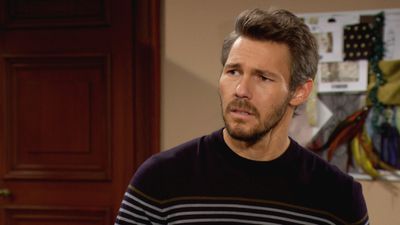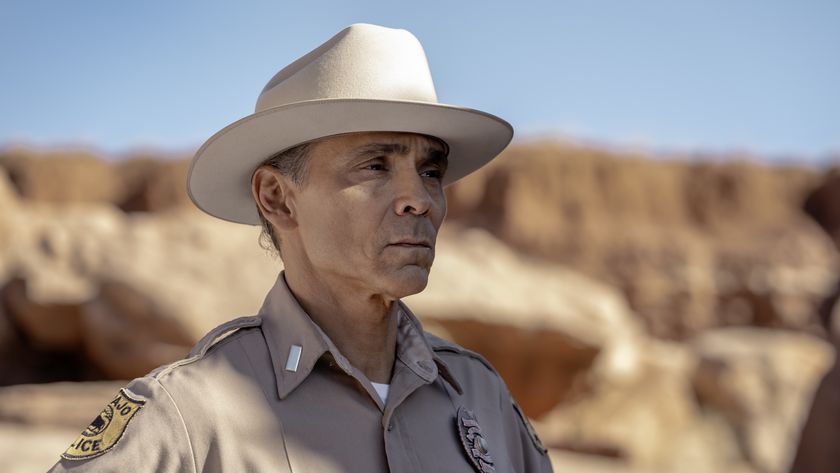What makes 'Godzilla vs. Kong' is the best giant monster movie since 'Pacific Rim'
Let them feel.

This post contains spoilers for Godzilla vs. Kong
Read our Godzilla vs. Kong review here.
Godzilla vs. Kong, the latest in the Monsterverse series of films that began with 2014’s moody Godzilla reboot, is a total hoot. It’s easily the best entry in this crop of films, which pit oversized creatures against one another in city-destroying melees (including 2017’s 60s-set Kong: Skull Island and 2019’s Godzilla: King of the Monsters). And it’s easily the most accomplished, most involving giant monster movie since Guillermo del Toro’s sublime Pacific Rim. Stylistically, there’s not much difference between Godzilla vs. Kong and the Monsterverse movies that came before it; the visual effects are lovingly rendered and the action sequences maximized to a truly outrageous level of destruction. Where Godzilla vs. Kong deviates – and what makes the movie so special – is that it actually invests in a relationship between Kong and a human character. It might seem like a simple adjustment, but in the context of these movies, it’s downright radical. And it makes for a very different type of movie.
The argument can be made – and is frequently made – that the human characters are not why people go to see movies primarily populated with giant fighting monsters. This argument is, in a sense, fair. The Godzilla movies (and movies like it) were never that concerned with what went on with the human character. The franchise, from the very beginning, has been more concerned with grand, sweeping thematic brush strokes. The originally film was a metaphor for the atomic destruction of World War II, subsequent installments have tackled everything from the dangers of artificial intelligence to the toxicity of rampant pollution, with the character of Godzilla serving different purposes for different stories/allusions. And, you know, giant monsters walloping each other has its own elemental storytelling power.
It’s here where we pause to acknowledge 2017’s brilliant Shin Godzilla. Written and co-directed by Neon Genesis Evangelion mastermind Hideaki Anno, it almost exclusively deals with mankind’s response to Godzilla crawling out of the water and wreaking havoc. You see governments scramble to form committees and hold stuffy meetings to try and deal with the phenomenon. Frantic calls are made. International allegiances hastily formed. And all of the main characters are frazzled bureaucrats. It, rightfully, received major attention for just how different this angle was. And it is a deeply amazing movie.
The Monsterverse movies have had a particularly hard time figuring out what to do with its human characters. 2014’s Godzilla, which had a famously in-flux production thanks to an unfinished script and multiple corporate demands, unwisely killed off the most sympathetic character (Bryan Cranston’s nuclear technician/doting father) halfway through the movie, leaving the audience without a character to connect to. (Sorry, Aaron Taylor-Johnson.) Kong: Skull Island did a slightly better job on the human front, mostly because it cast so many likable actors in plumb roles (including Brie Larson, John Goodman, Samuel L. Jackson and John C. Reilly) but it also made baffling decisions like casting Tom Hiddelston as a “master tracker” who doesn’t really do anything. And the post-Vietnam War setting, while insanely cool and adding some much-needed texture, also creates an emotional divide since we know we’ll never see them again in the main, modern day-set continuity.
Godzilla: King of the Monsters certainly had more characters, although most of them were relegated to either commanding some kind of aircraft or looking at computer monitors. It did, however, have a huge moment for the entire franchise – in a touching sequence Ken Watanabe, in an effort to revive Godzilla, sets off a nuclear explosion. In the same scene he does something no other character has done in a previous Godzilla movie: he touches Godzilla. It’s a subtle, quiet moment, and those without a knowledge of the history of the character and film series would have probably not thought anything of it, but it seemed to open the door to the possibility of the monsters and humans connecting on a more personal level.
All of which brings us to Godzilla vs. Kong. In the opening sequence of the movie, set in a contained, heavily monitored section of Skull Island (there has been some kind of catastrophic event that has turned the once-lush island into a continuous typhoon), we see that Kong has formed a relationship with a young girl named Jia (Kaylee Hottle). Jia, we later learn, is the last of the Iwi people that used to populate Skull Island. She, like Kong, is an orphan. It’s a brief sequence but it establishes something important: that they have a bond that goes beyond the relationship between any character and giant monster in the Monsterverse thus far. It also adds a dimension to the movies that were sorely missing before: the friendship between a human and a nonhuman character.
Get the What to Watch Newsletter
The latest updates, reviews and unmissable series to watch and more!
The trope of a human character forming a friendship with a nonhuman character is the basis for one of the most popular and touching movies of all time. It’s what makes E.T. The Extra-Terrestrial and The Iron Giant and Lilo & Stitch and Okja so unforgettable. Within the relationship between human and creature, there are unspoken bonds and the ability for the human character to more easily access their humanity through the relationship with the nonhuman creature. This element, when folded into Godzilla vs. Kong, goes a long way.
But the moment that cements the relationship as the true heart of Godzilla vs. Kong comes a few scenes later. Kong is being transported on an aircraft carrier, when Jia makes her way out to where they are keeping Kong. It’s raining and she touches Kong. (See, echoes of Watanabe in Godzilla: King of the Monsters!) And then it goes further — she signs with him. And Kong signs back. This type of communication makes sense; gorillas have had the ability to communicate with scientists and zoologists for years. Letting Kong sign moves him even further away from being a mindless creature. He’s closer to us than we’d imagined. And the scene is beautifully, tenderly done – it’s the closest thing any of the Monsterverse movies have had to a moment that could lead audiences to tear up.
While the rest of the movie veers closer to earlier giant monster movies, the emotional core of Godzilla vs. Kong remains the relationship between Kong and Jia. It enriches the movie and sets it apart from others like it. The rest of the movie is more fun than an entire day at the theme park, but the relationship between Kong and a little girl turns out to be the greatest special effect.
Drew Taylor has written for Vulture, Polygon, MTV, Collider, Moviefone, Thrillist, Disney.com, and The Playlist. He is also the author of The Art of Onward, about the making of the Pixar animated fantasy from 2020. He is the co-host of animation podcast Fine Tooning and the Mission: Impossible-centric podcast Light the Fuse. He made Tom Cruise laugh once.













